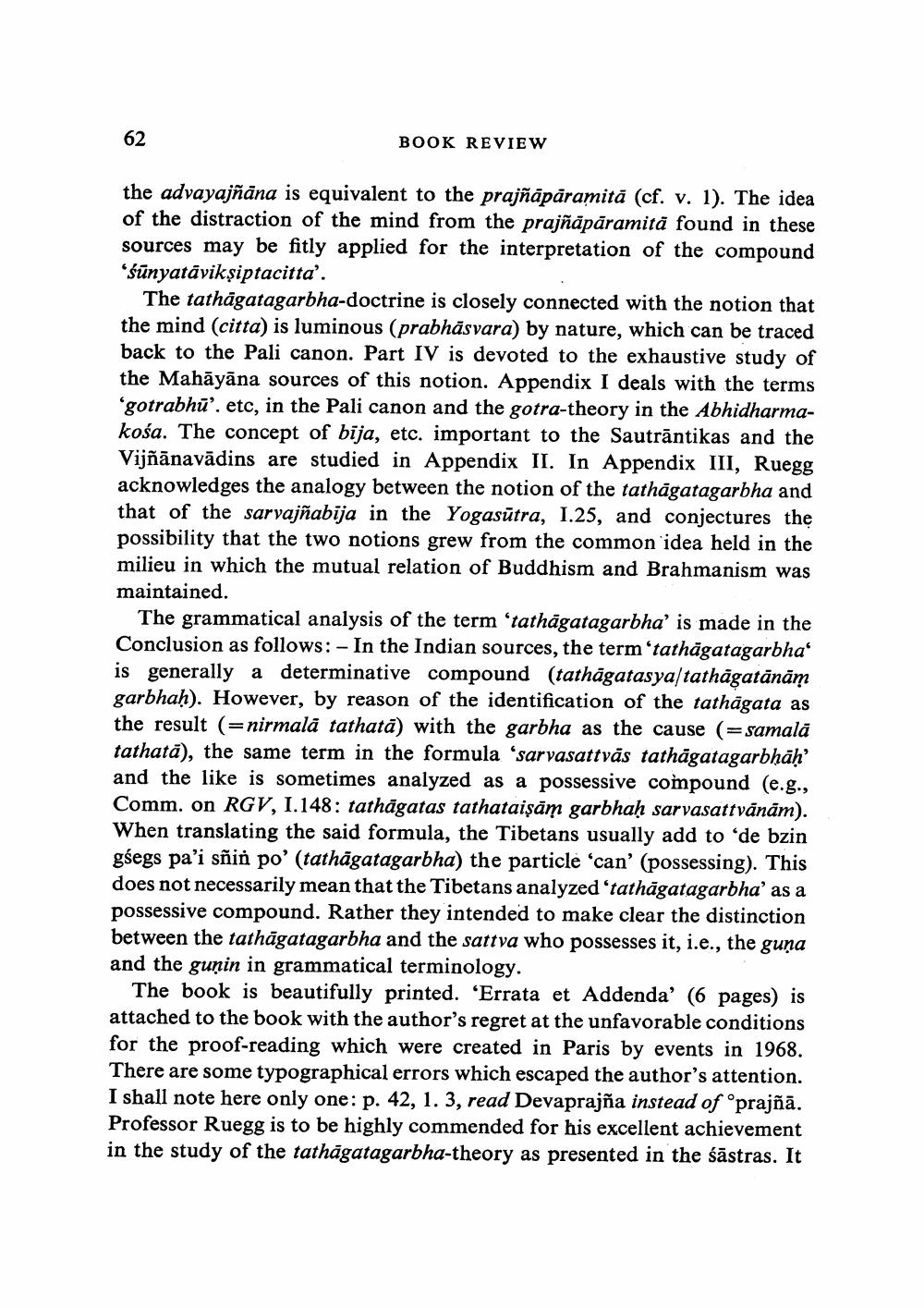________________ BOOK REVIEW the advayajnana is equivalent to the prajnaparamita (cf. v. 1). The idea of the distraction of the mind from the prajnaparamita found in these sources may be fitly applied for the interpretation of the compound 'sunyataviksiptacitta'. The tathagatagarbha-doctrine is closely connected with the notion that the mind (citta) is luminous (prabhasvara) by nature, which can be traced back to the Pali canon. Part IV is devoted to the exhaustive study of the Mahayana sources of this notion. Appendix I deals with the terms 'gotrabhu'. etc, in the Pali canon and the gotra-theory in the Abhidharmakosa. The concept of bija, etc. important to the Sautrantikas and the Vijnanavadins are studied in Appendix II. In Appendix III, Ruegg acknowledges the analogy between the notion of the tathagatagarbha and that of the sarvajnabija in the Yogasutra, 1.25, and conjectures the possibility that the two notions grew from the common idea held in the milieu in which the mutual relation of Buddhism and Brahmanism was maintained. The grammatical analysis of the term 'tathagatagarbha' is made in the Conclusion as follows: - In the Indian sources, the term'tathagatagarbha' is generally a determinative compound (tathagatasya/tathagatanam garbhah). However, by reason of the identification of the tathagata as the result (=nirmala tathata) with the garbha as the cause (=samala tathata), the same term in the formula 'sarvasattvas tathagatagarbhah and the like is sometimes analyzed as a possessive compound (e.g., Comm. on RGV, 1.148: tathagatas tathataisam garbhah sarvasattvanam). When translating the said formula, the Tibetans usually add to 'de bzin gsegs pa'i snin po' (tathagatagarbha) the particle 'can' (possessing). This does not necessarily mean that the Tibetans analyzed 'tathagatagarbha' as a possessive compound. Rather they intended to make clear the distinction between the tathagatagarbha and the sattva who possesses it, i.e., the guna and the gunin in grammatical terminology. The book is beautifully printed. 'Errata et Addenda' (6 pages) is attached to the book with the author's regret at the unfavorable conditions for the proof-reading which were created in Paris by events in 1968. There are some typographical errors which escaped the author's attention. I shall note here only one: p. 42, 1.3, read Devaprajna instead of oprajna. Professor Ruegg is to be highly commended for his excellent achievement in the study of the tathagatagarbha-theory as presented in the sastras. It




